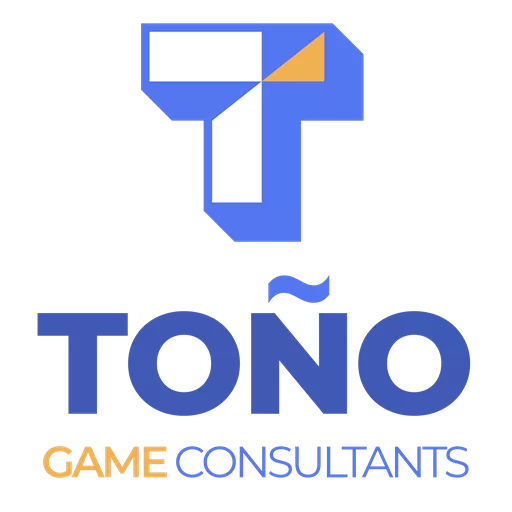Hey there, future gamemakers! If you’re gearing up to create the next big hit, you’re probably wondering what skills (and teammates) you need to bring your vision to life.
The game development landscape is constantly evolving, with new tools, technologies, and techniques emerging every year. Whether you’re building an indie gem or aiming for a blockbuster title, understanding the core game development disciplines is essential.
In this guide, we’ll walk through the essential disciplines: from crafting compelling narratives and designing intuitive interfaces to programming complex systems and marketing your masterpiece.
By the end, you’ll have a clear picture of the roles behind every game — and how they all come together to make the magic happen.
Why Knowing Every Discipline Matters
Why learn about every game development discipline?
Because it makes you a better developer, designer, or producer. Understanding how each role works helps you:
-
Communicate better: If you know what your artist or programmer cares about, collaboration flows smoother.
-
Plan realistically: You’ll understand what’s possible, what takes time, and what should be prioritized.
-
Fill gaps: In small indie teams, one person often wears multiple hats. Knowing the essentials helps you cover more ground.
Game development is a team sport, even if you’re solo, you’re still juggling multiple disciplines. The more you know, the better you’ll be at pulling everything together.
Game Designer → The Vision Driver
Game designers are the value-finders: they make sure the team is working toward something players will actually care about.
Design is a broad discipline with many flavors. Here are the big ones you’ll run into:
-
Gameplay & Mechanics Designers → Convert ideas into reality. They focus on how the game plays, making sure mechanics are fun, challenging, and rewarding.
-
Content & Narrative Designers → Writers, lore builders, and storytellers. They craft worlds, characters, dialogue trees, quests, and item descriptions.
-
Level Designers → Shape the physical space of the game. From spawn points to sightlines, they decide how players move through environments.
-
Systems Designers → Balance encounters, tune economies, and ensure fairness. They’re the math brains behind difficulty curves and progression.
-
Experience Designers → Care about feel. Jumping, moving, attacking, every action should feel satisfying and intuitive.
-
UI Designers → Make sure the interface communicates clearly and fits seamlessly into the game’s aesthetic.
👉 Want a head start? Grab the Game Dev Starter Kit, it gives you simple frameworks to organize your ideas, profile your players, and start playtesting fast.
Programmer → The Technical Backbone
Programmers transform design into reality. They make sure systems, AI, visuals, and gameplay logic all work together.
Subcategories include:
-
Engine Programmers → Work on the foundation (or integrate engines like Godot, Unity, Unreal). They handle services, APIs, and core performance.
-
Graphics Programmers → Ensure visuals render correctly from all angles. Their focus: optimization, shaders, lighting, and consistency.
-
Physics Programmers → Handle collisions, forces, and reactions. Example: bullets hitting walls, crates falling, or a sword bouncing off a shield.
-
Gameplay Programmers → Glue everything together: combat, interactions, abilities, and feedback loops.
-
AI Programmers → Develop NPC behavior, enemy logic, and pathfinding. Sometimes folded under gameplay, sometimes a full specialty.
-
Tools Programmers → Build the editors and utilities that make everyone else’s job easier — from level editors to scripting systems.
This is where many beginners get overwhelmed. Lots of moving parts, lots of complexity. That’s why planning early and staying organized is so important.
Artist → The Visual Worldbuilder
Artists create the look and feel of the game. They transform concepts into immersive worlds and characters.
Main types include:
-
Concept Artists → Sketch early ideas for characters, environments, and props. They set the tone for the project.
-
Character Artists → Build detailed models of heroes, NPCs, and enemies. Their work brings characters to life visually and emotionally.
-
Environment Artists → Craft the spaces players explore, from sweeping landscapes to tight corridors.
-
VFX Artists → Add the wow factor — explosions, particle effects, weather, and other visual polish.
-
UI/UX Artists → Design how players interact with menus, HUDs, and information. Their work ensures clarity and immersion.
Without artists, games wouldn’t look like games — they’d be empty systems.
Sound Designer → The Audio Storyteller
Sound and music define how a game feels.
Roles include:
-
Composers → Create the score, shaping emotion and atmosphere.
-
Sound Designers → Develop effects for footsteps, weapons, menus, and ambience.
-
Audio Engineers → Integrate sounds into the game engine so everything triggers at the right time.
From the crunch of gravel to the swell of an epic boss theme, audio ties the player emotionally to the world.
Producer → The Organizer
The producer isn’t the “boss” of the project, they’re the support system that keeps everything moving smoothly. Their main responsibility is to help the designer and the rest of the team stay organized, efficient, and aligned with the game’s goals.
A good producer:
-
Keeps communication clear → making sure designers, programmers, artists, and QA all understand priorities.
-
Tracks progress → setting milestones, deadlines, and making sure the team knows what’s coming next.
-
Solves bottlenecks → removing roadblocks so the team can focus on creating instead of chasing fixes.
-
Protects the vision → by balancing time, resources, and scope so the game ships in the best possible state.
In short, producers ensure the team doesn’t get lost in the chaos of development. They don’t take away creative control, they enable it, creating a structure where the designer’s vision can actually come to life.
QA → The Quality Guardians
QA testers keep games stable, fun, and shippable.
-
Testers → Play games endlessly to find bugs, crashes, or broken mechanics.
-
Automation QA → Write scripts and tests that catch regressions instantly.
QA isn’t just “playing games.” It’s a discipline that requires patience, attention to detail, and a knack for breaking things on purpose.
Business Development → The Promoter
Games need more than design and code. They need money, visibility, and a player base.
Key roles include:
-
Funding Advocates → Secure money from crowdfunding, publishers, or investors.
-
Marketers → Build hype with trailers, press releases, ads, and influencer partnerships.
-
Community Builders → Grow player communities, run Discords, and manage engagement.
-
Outsourcing Managers → Bring in external partners for localization, ports, or specialized tech.
Without business development, even great games risk disappearing into the void.
Wrapping It Up
And there you have it — the main disciplines of game development.
From the visionary designers and tech-savvy programmers to the artists, sound designers, QA, and business strategists, every role matters. Together, they form the foundation of every great game.
Understanding these roles helps you see the bigger picture, whether you’re building a solo project or leading a team.
And if you’re ready to take your next step into structured design, check out our Game Design Offer
FAQ: Game Development Disciplines
What are the main disciplines in game development?
The main disciplines in game development include design (gameplay, systems, narrative, level, UI/UX), programming (engine, graphics, physics, AI, tools), art (concept, character, environment, VFX), sound (music, sound effects, audio engineering), production (producers, project managers), quality assurance (QA), and business/marketing. Each plays a unique role in bringing a game to life.
Do I need to master all disciplines to make a game?
No. While it’s helpful to understand the basics of each discipline, most developers specialize in one area. However, in smaller indie teams, it’s common for one person to wear multiple hats. What matters most is ensuring all roles are covered, even if shared by a few people.
Which game development discipline is best for beginners?
It depends on your interest. If you enjoy storytelling and player experience, start with game design. If you like problem-solving and coding, go for programming. If you’re artistic, try concept art or 3D modeling. For newcomers, experimenting with tools like Unity, Unreal, or Godot helps you explore multiple disciplines.
How do the disciplines work together in a game project?
Each discipline supports the others: designers define the vision, programmers build the systems, artists shape the visuals, sound designers add immersion, QA ensures stability, producers keep everything on track, and business developers/marketers help fund and promote the game. Collaboration is key.
What discipline should I choose if I want to get a job in the game industry?
Choose based on your passion and skillset. Programming, art, and design are core entry points. QA is often the easiest way to enter the industry and learn the workflow. Production is suited for strong communicators, and marketing/business for those who enjoy strategy and outreach.
Can one person create a game alone?
Yes, many solo developers have created successful indie games. But even solo projects require covering multiple disciplines: design, programming, art, sound, testing, and marketing. Tools like asset stores, middleware, and outsourcing can help fill gaps.
What’s the difference between game design and game development?
Game design is about what the player experiences (mechanics, rules, story, feedback). Game development is the entire process of making the game, which includes design but also programming, art, sound, QA, and business.
How do producers fit into game development disciplines?
Producers act as support roles. They help the team stay organized, keep schedules realistic, manage resources, and ensure the project’s goals are met. While they may not create art or code, they make sure the creative team can focus on delivering a great game.
Are there disciplines outside of the actual development process?
Yes. Beyond core dev, roles like community management, player support, localization, monetization, and live operations (LiveOps) are critical for games after launch.
Which discipline pays the most in game development?
Compensation varies, but generally senior programmers, technical directors, and producers are among the highest-paid roles. However, high demand also exists for specialized artists (VFX, technical artists) and experienced designers.


